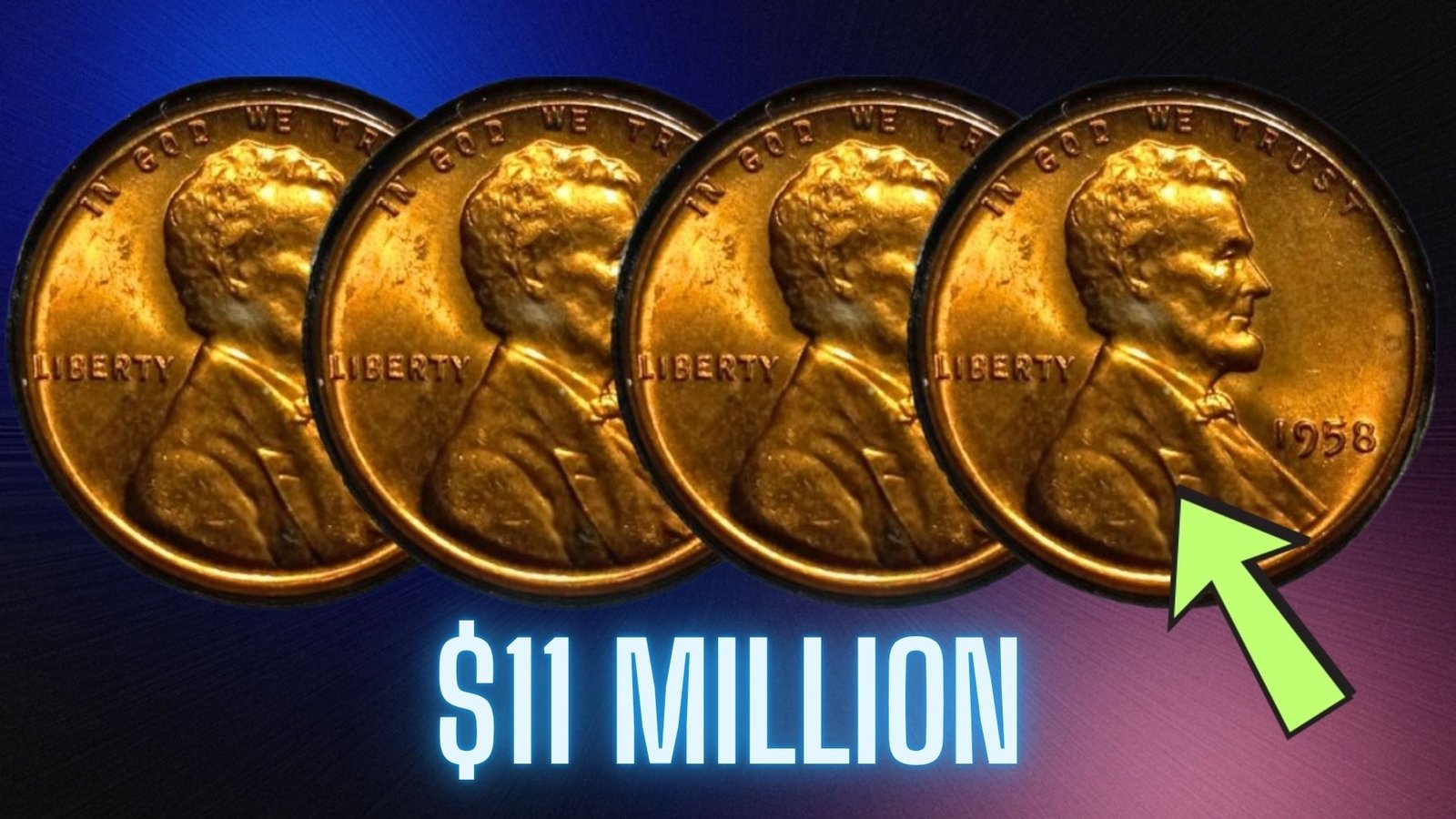Somewhere out there, a small copper coin could be worth a life-changing $11 million. It’s not gold, it’s not silver — it’s a simple Lincoln Wheat Penny hiding in plain sight. Coin collectors, treasure hunters, and even casual change checkers are all on the lookout for this incredible piece of history. But what makes one tiny penny worth millions? Let’s uncover the mystery.
What Is the $11 Million Lincoln Wheat Penny?
The Lincoln Wheat Penny, first minted in 1909, features Abraham Lincoln’s portrait on the front and two wheat stalks on the back. While billions were made, one particular version has sparked global fascination — a rare 1943 copper penny, mistakenly struck during World War II when pennies were supposed to be made from steel. This minting error turned an ordinary coin into one of the most valuable coins in US history.
The Story Behind the Rarity
In 1943, copper was urgently needed for war supplies, so the US Mint switched to steel planchets coated with zinc. But a few leftover copper blanks from 1942 accidentally made their way into the presses. As a result, a handful of 1943 pennies were struck in copper instead of steel, creating one of the greatest coin errors ever discovered. Only a few have surfaced — and each one has fetched staggering amounts at auction.
Why This Penny Is Worth Millions
Collectors value coins for their scarcity, historical context, and minting errors. The 1943 copper penny checks all three boxes. When one of these pennies surfaced in pristine condition, it sold for over $1.7 million — and experts estimate an even rarer, near-perfect example could command up to $11 million. For comparison, a regular 1943 steel penny is worth just a few cents.
How to Identify the $11 Million Penny
If you want to check your change, here’s what to look for:
| Feature | Rare 1943 Copper Penny | Common 1943 Steel Penny |
|---|---|---|
| Material | Copper / bronze | Steel coated with zinc |
| Color | Reddish-brown | Silver-gray |
| Magnet Test | Not magnetic | Magnetic |
| Weight | 3.11 grams | 2.7 grams |
| Mint Marks | D, S, or none (Philadelphia) | Same |
| If your 1943 penny sticks to a magnet, it’s steel — but if it doesn’t, you may have found one of the holy grails of US coin collecting. |
Famous Discoveries and Auction Records
| Year | Event | Sale Price |
|---|---|---|
| 1958 | First 1943 copper penny discovered | $40,000 |
| 2010 | California teen finds 1943-S penny | $1.7 million |
| 2019 | Another 1943 penny sold privately | $1.75 million |
| 2024 (Estimate) | Perfect MS-65 grade example | $11 million |
| These coins have captivated collectors for decades, sparking countless stories of people checking their jars, drawers, and pockets in hopes of striking it rich. |
Expert Tips for Collectors
- Use a Magnet: The easiest way to tell if your penny is copper or steel.
- Weigh It Accurately: Use a digital scale; 3.11 grams indicates a possible copper strike.
- Check for Fakes: Many altered coins exist — have your coin verified by PCGS or NGC.
- Look for Mint Marks: Denver (“D”) or San Francisco (“S”) mint versions are even rarer.
- Handle Carefully: Avoid touching the surface; oils from fingers can reduce its grade.
FAQs About the $11 Million Wheat Penny
Q: Are all 1943 pennies valuable?
A: No. Only the ones made from copper or bronze, not steel, are rare and valuable.
Q: Can I sell my 1943 penny easily?
A: Yes, but only after professional verification by a grading service like PCGS.
Q: Where should I look for rare coins?
A: Old jars, inherited collections, and estate sales often hide hidden gems.
Why the Hunt Still Continues
Even today, new finds are reported every few years. The mystery of how many 1943 copper pennies exist keeps the coin-collecting community buzzing with anticipation. Some believe there may still be undiscovered pieces sitting in private hoards or even circulation. Imagine paying for coffee and realizing later that your change included an $11 million penny.
Conclusion: Could You Be the Next Finder?
The Lincoln Wheat Penny is more than a coin — it’s a piece of American history, a story of wartime error turned into fortune. Somewhere out there, another $11 million treasure could be waiting to be found. The next time you sort your loose change, remember: history doesn’t always glitter — sometimes, it shines like copper.

